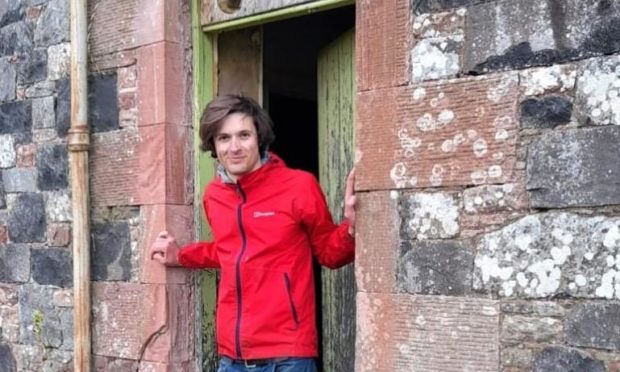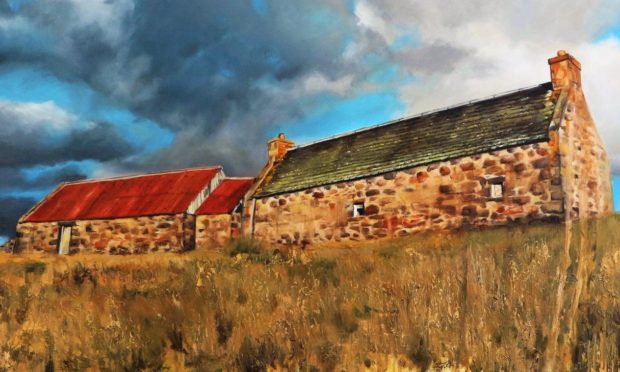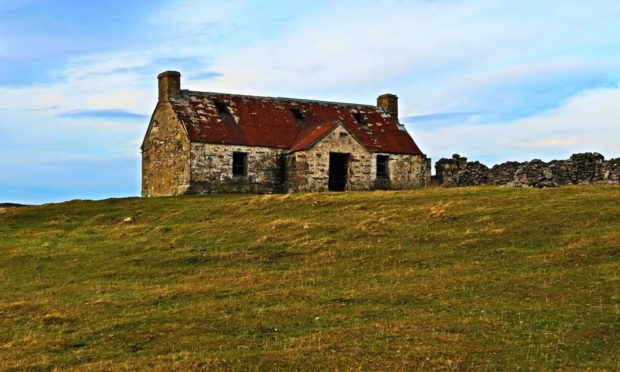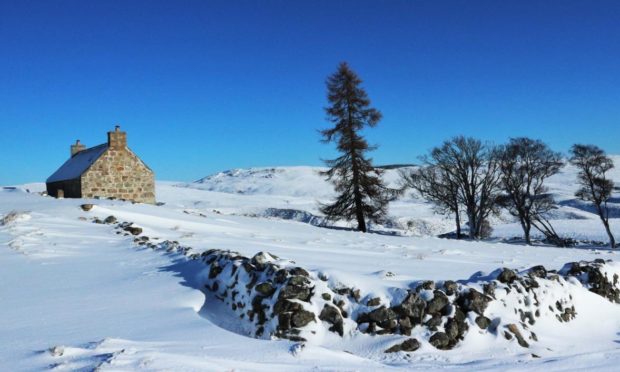The empty houses dotting the landscape on the Dava Moor are a memory of a largely abandoned way of life.
Some appear frozen in time, household items remaining in place decades after the crofts and farmhouses were vacated.
The story of the moor, and some of those who lived there, are told in a new book which is published this month as part of an exhibition of artwork, photography and sound recordings about the stretch of land between Grantown and Forres.
Artist Charles Fletcher, who grew up in Grantown, wrote the book after researching stories behind the buildings he captured in paintings and photographs exhibited at Grantown Museum and the Moray Art Centre in the summer of 2019.
It features interviews with farmers and gamekeepers who worked on the moor, along with others with links to the area which he said was the scene of historical “social engineering”.
Drawn from the Past: Voices from Dava Moor is Mr Fletcher’s first book and will be launched at the exhibition hosted by Grantown Museum and Heritage Trust on May 21.
It is the culmination of years of work on the project, and combined his artistic skills with his interest in Scottish history which he studied for a PhD.
It involved lengthy spells of research in the National Records of Scotland archives as well as tracking down people with links to the moor.
Who lived in a house like this?
The artist said: “Despite being empty for decades, many of these homes appear to have frozen in time, awaiting the return of the last inhabitants who walked out half a century before, the kettle still on the hob, family bible on the kitchen table, jacket on the hook.
“Two questions always haunt me when I visit places like these: who lived there? And why did they leave?
“What started out as an art project to depict the crumbling upland farms and crofts of Strathspey grew into an attempt to capture the story and essence of a vanishing community, in many ways similar to others across Scotland, but unique in its own way.”
Mr Fletcher said he wanted to find out why people decided to farm in such a bleak landscape in the first place.
He said: “Many of the farms were created in the 1760s as part of Sir James Grant’s misconceived attempts to modernise his estates.
“In essence, this involved forcing tenants to abandon traditional cattle farming associated with Gaelic culture and grow crops instead.
“Their old sheiling grounds on the moors were taken from them and given to others who, rather optimistically, undertook to transform the heather and peats mosses into grain yielding land.
“The project was a disaster. The new farms failed.
“Existing farmers were forced into poverty. Famine struck Sir James’ estates. Hundreds of tenants emigrated from Strathspey to America.”
Just about a dozen houses remain
He said there were still 400 people living in the moor in the 1900s, but now only around a dozen are left.
He spoke to one woman who remembers the traditional way of life and recalls living on hares and rabbits, along with an occasional grouse.
Another farmer spoke of rescuing people from heavy snow drifts in 1963 and having them stay in his house for a week when they became trapped by the conditions.
Mr Fletcher said the book and exhibition will help people reconnect with the area.
He added: “After lockdown a lot more people have been exploring the local area as they have been unable to go elsewhere.
“This has helped generate more interest in it as people have become more interested in their local area.
“So people who come to the exhibition can see and hear about what life was like on the moor. Then they can go there and see the abandoned houses and get a feel for it themselves.”
Grantown museum manager, Dan Cottam said: ‘We are so pleased to bring this new story to light.
“It’s a really important piece of historical research that re- positions our knowledge on crofting history in Strathspey and the consequences that estate policy had on everyday people.
“It has also been fantastic to capture first-hand voices from the 2oth century to round off the story.”



